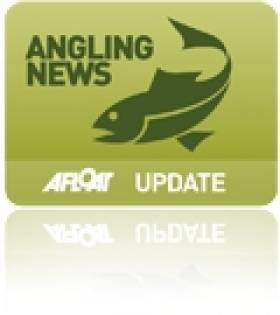Displaying items by tag: Patrick O'Molloy
Tribute to River Liffey Salmon Pioneer
#ANGLING - A plaque paying tribute to the late secretary of the Dublin Salmon Anglers' Association has been inveiled at Carton Estate in Co Kildare.
Patrick 'Pat' O'Molloy, who died in November last year, was commemmorated for his pioneering work over the last 35 years in the rehabilitation and restoration of wild salmon stock in the River Liffey, The Irish Times reports.
This involved introducing micro-tagged smolts into the Rye, a tributary of the Liffey upriver of the Carton Estate weir which was impassable from further downstream.
Sadly O'Molloy died before the return of salmon to the Liffey in a year that also saw their return to the Tolka afer more than a century.
Former fisheries CEO Alan McGurdy said at the ceremony: "As you all know, Pat was an angler, a board member, environmentalist, fish farmer and most of all, a friend.
"Today is some recognition to the great man for the tremendous work he did to look after our fish."





























































